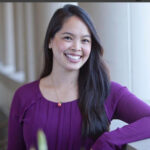In this blog, we’ll explore some essentials of establishing a Community Oral Health Program, some “Do” and “Do not.” Creating a robust community oral health program is more than a goal; it’s a commitment to the well-being of a community. Community Oral Health Program, commonly known as COHP, is a public health initiative aimed at improving oral health of a specific community. It incorporates the principles of health education and promotion and extends beyond oral hygiene education. One of main goal of such programs is focusing on collective well-being and quality of life.
Postgraduate Degree in Community Oral Health
Like what you’re learning? Consider enrolling in the Herman Ostrow School of Dentistry of USC’s online, competency-based certificate or master’s program in Community Oral Health.
Now, why is this topic crucial? The oral health of a community directly impacts its overall health. There are well established research results indication the link between oral health and general health. A well-structured COHP can prevent oral diseases, enhance overall health outcomes, and foster a sense of well-being within the community. Let’s unravel the nuances of this initiative and address the” dos “and “don’ts” that can shape its success.
Understanding the Do’s
Education Initiatives: Implementing informative sessions and workshops can empower community members with knowledge about oral health practices. By also including graphics in flyers or media outlets helps to illustrate the impact of preventive measures, making the information accessible and clear.
Accessible Oral Health Services: Improving access to oral health care by Establishing clinics and organizing mobile dental units in
dental deserts to ensure the community has easier access to oral health services to treat untreated tooth decay and other infections. Accessibility is key to the population your program intends to serve.
Involving stakeholders: COHP needs planning, execution, and evaluation. Involving stake holders in all steps are crucial to the success of the program. The program needs to be useful, feasible ethical and evidence- based.
Sustainability: Ensuring the sustainability of the program by securing funding and ensuring a cadre of well-prepared public health workforce will create positive impacts on the current community, as well as the future of that community.
Steering Clear of the Don’ts
Ignoring Cultural Sensitivities: Avoid cultural insensitivity by tailoring educational materials, consents and programs to align with the community’s cultural norms. Respectful representation that fosters a sense of inclusivity.

Figure 3: Elements of Culture
Neglecting Follow-up and Monitoring: Continuous evaluation and monitoring are crucial. Neglecting these aspects can hinder the program’s effectiveness. Present data-driven graphs depicting the positive impact of monitoring efforts. Plan for continuous evaluation, especially in the implementation phase. This helps to identify unexpected barriers and problems to fine-tune and strengthen the COHP.
The journey of establishing a Community Oral Health Program is both dynamic and rewarding. By embracing the do’s: educational initiatives, accessible services, involving stakeholders and creating sustainability and avoiding the don’ts, like cultural insensitivity and neglecting monitoring, we pave the way for healthier, happier communities.
Take-home Messages for Our Community
Empowerment through Education: Education is the cornerstone of a successful program. Empower the community with knowledge to foster long-term oral health practices.
Inclusivity and Continuous Improvement: Prioritize cultural inclusivity and ongoing evaluation. A program that adapts to the community’s needs is a program that thrives.
Earn an Online Postgraduate Degree in Community Oral Health
Do you like learning about a variety of issues while focused on the unique needs of community health dental programs? Consider enrolling in the Herman Ostrow School of Dentistry of USC’s online, competency-based certificate or master’s program in Community Oral Health.
References
- American Dental Association. Breaking down barriers to oral health for all Americans: the role of workforce. J Calif Dent Assoc. 2011 Jul;39(7):491-502. PMID: 21905545.
- Buischi YA, Axelsson P, Oliveira LB, Mayer MP, Gjermo P. Effect of two preventive programs on oral health knowledge and habits among Brazilian schoolchildren. Community Dent Oral Epidemiol. 1994;22:41–6
- Centers for Disease Control and Prevention. (2017, May 15). Framework for Program Evaluation – CDC. Centers for Disease Control and Prevention.
- Cultural Competence Program for Oral Health Professionals! The Office of Minority Health of the Department of Health and Human Service (HHS).
- Kwan SY, Petersen PE, Pine CM, Borutta A. Health-promoting schools: an opportunity for oral health promotion. Bull World Health Organ 2005 Sep;83(9):677-685.
- Redmond CA, Blinkhorn FA, Kay EJ, Davies RM, Worthington HV, Blinkhorn AS. A cluster randomized controlled trial testing the effectiveness of a school-based dental health education program for adolescents. J Public Health Dent. 1999;59:12–7.
- World Health Organization. Global oral health status report: towards universal health coverage for oral health by 2030. Geneva: World Health Organization, 2022.
- World Health Organization. WHO highlights oral health neglect affecting nearly half of the world’s population. Geneva: World Health Organization, 2022.


